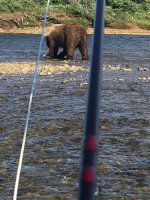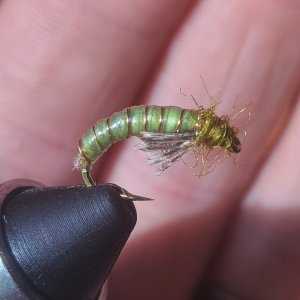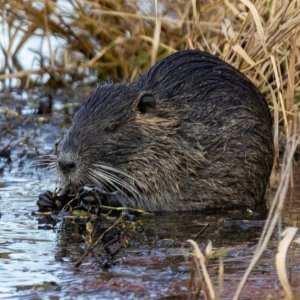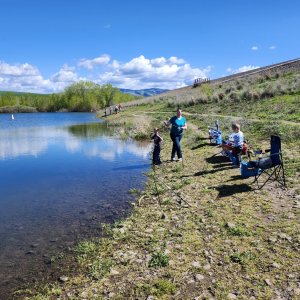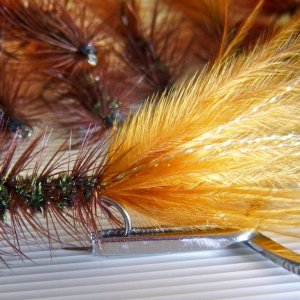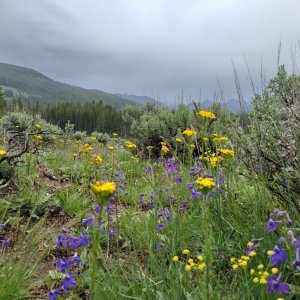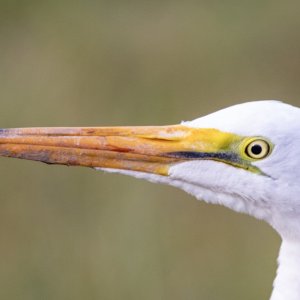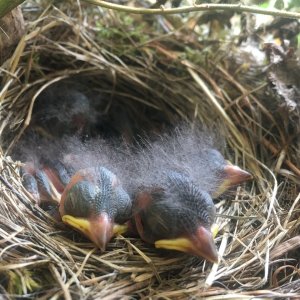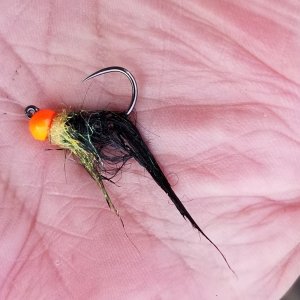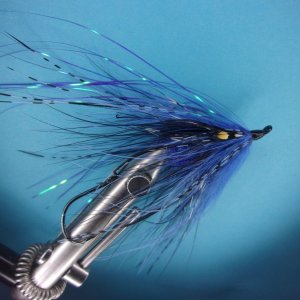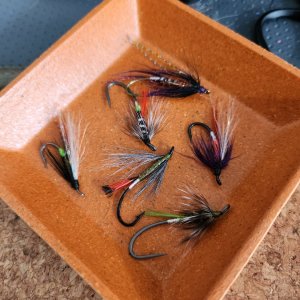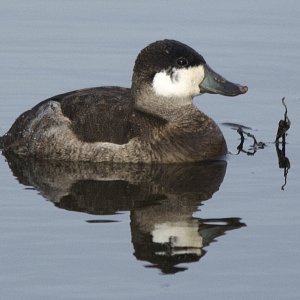You are using an out of date browser. It may not display this or other websites correctly.
You should upgrade or use an alternative browser.
You should upgrade or use an alternative browser.
U.S. drafts plan to bring grizzly bears back to Washington’s North Cascades (WAPO)
- Thread starter kmudgn
- Start date
I am listening but may not agree that the US government should transplant bears into the NCE.Honestly, I am tired of repeating facts to some who will not listen. And, to the non-listeners, those are your rights and I respect them. I try to back up what I say with info from the folks who do the hard work and put in the time.
I do Thank You for the links and watched the video (while following along with the transcript). It cleared up a few few things for me that I like, but perhaps I misunderstood a few other things and now have a couple of new questions.
Although I seriously doubt WDFW would ask the Washington State AG to file a Federal lawsuit to defend, then enforce RCW 77.12.035 it doesn't sound right that the Feds should be able to unilaterally transplant bears in conflict with State law.
Also it sounded as though a 10(j) amendment establishing new management rules (that I agree with) under ESA is contingent upon the declaration of an experimental population of bears being transplanted by the US government into the NCE prior to the expected 2024 transplant of bears by Canadian First Nations into the BC Cascades north of the US NCE, and is a major reason for option C (transplanting by the US into the NCE?)? Why not go to Congress and ask for a change to ESA to allow creation of a 10(j) for new management rules to deal with the extraordinary event expected in 2024 that creates a high potential for Griz migration south into the NCE?
Finally, the video (voice audio and transcript) sounded like both the NPS and NFWS ultimately want "Griz recovery to extend beyond the Recovery Zones into the (entire) lower 48"??
@15:36 "We're also looking to enhance the probability of long term survival business [probably mis-transcribed and said "in this"] ecosystem and throughout the Lower 48, which speaks to that, you know, we're one piece of that six piece puzzle I showed earlier for recovery of grizzly bears in the lower 48. So this is that one big piece that's currently ...which speaks to that, you know, we're one piece of that six piece puzzle I showed earlier for recovery of grizzly bears in the lower 48."
That's kind of a large change of scope.
Last edited:
It's interesting you bring up science in your first paragraph. In 2020 the Department of Interior said grizzly bear reintroduction was not needed for the survival of the species in Washington and the case was closed...So why don't you explain the science that has been done in the last 3 years to change that stance by the department...?You keep bringing up the ungulate argument but it doesn’t really mean anything. Can you show that a population of 200 bears could not be supported by available food sources currently in the area citing historic data? Raw harvest data or observation and subjective anecdotes about the number of ungulates in an area is just not useful. Are ungulates in the area truly in trouble compared to historic population data or is it just more difficult to harvest them than it was in years past when humans actively removed most predators? I may be crazy but I imagine there is science behind this plan. I also imagine available food sources were considered in its development.
Also, hunters should have a say in how Washington’s wildlife is managed but the reality is less than 5% of WA residents hunt. 10+ times that many residents enjoy the outdoors for other purposes including hiking, wildlife viewing, etc. Ungulates and predators are a shared resource in this state and all interests should have a seat at the table. How would justify disagreeing with that?
As to hunting and predators I apologize for going down a rabbit hole answering a few questions that may make it seem I want to derail this thread and have a large debate on it. I don't. I think we should keep it bear and relocation related. Questioning what this large roaming critter will eat to me seems relevant but to you it may not be relevant and that is fine. We can agree to disagree
Last edited:
Between you, me, and the lamppost, that seems like a great question especially when an article from 2018 I posted yesterday questioned the ability of the BC Southern Cascades habitat zone carrying capacity to sustain Griz relocation.Questioning what this large roaming critter will eat to me seems relevant
Also it sounds like the diet for ungulates and *"interior"* Griz is actually similar with Griz making up for a poor berry season in the fall to store up fat for winter by scavenging carrion or with live kills prior to hibernation and winter kill after emergence in the spring (to perhaps 31% of their diet). So it begs the question why are ungulates not doing well in the NCE?
Last edited:
This has shown up in my feed: https://www.msn.com/en-us/news/us/l...1&cvid=f414f3303b624f218a6a20f3a180a831&ei=17
It's interesting you bring up science in your first paragraph. In 2020 the Department of Interior said grizzly bear reintroduction was not needed for the survival of the species in Washington and the case was closed...So why don't you explain the science that has been done in the last 3 years to change that stance by the department...?
As to hunting and predators I apologize for going down a rabbit hole answering a few questions that may make it seem I want to derail this thread and have a large debate on it. I don't. I think we should keep it bear and relocation related. Questioning what this large roaming critter will eat to me seems relevant but to you it may not be relevant and that is fine. We can agree to disagree
There is a difference between surviving recovering. The goal is for the recovery of the species in the target area.
As fast as diet, here is a quote from “Jason Ransom, the Wildlife Program Lead at the North Cascades National Park Service Complex” from one of the news stories on this subject (King 5) talking about where the reintroduced bears would come from.
"The North Continental divide ecosystem near Glacier National Park is a very strong candidate," said Ransom. "Interior British Columbia in the northern part where there is actually still a good, viable population, and possibly even Yellowstone. And the reason is, those bears come from a very similar food economy, so a plant-based diet."
I did not dig up the source info but half ass internet research looking at things like the GNP website says 85%-90% of those bears diets are plant and insect based. No concerns with you questioning what these bears are going to eat but it stands to reason that food availability was likely one if the larger, if not the largest thing considered in the models used to come to this decision.
I have already said numerous times I understand bears are omnivores but if you simply dig a little deeper you can read on the importance of meat at certain times for bears. It's really not debatable but here we are.There is a difference between surviving recovering. The goal is for the recovery of the species in the target area.
As fast as diet, here is a quote from “Jason Ransom, the Wildlife Program Lead at the North Cascades National Park Service Complex” from one of the news stories on this subject (King 5) talking about where the reintroduced bears would come from.
"The North Continental divide ecosystem near Glacier National Park is a very strong candidate," said Ransom. "Interior British Columbia in the northern part where there is actually still a good, viable population, and possibly even Yellowstone. And the reason is, those bears come from a very similar food economy, so a plant-based diet."
I did not dig up the source info but half ass internet research looking at things like the GNP website says 85%-90% of those bears diets are plant and insect based. No concerns with you questioning what these bears are going to eat but it stands to reason that food availability was likely one if the larger, if not the largest thing considered in the models used to come to this decision.
This is from the national park service:
From March through May, ungulates, mostly elk and bison, comprise a substantial portion of a grizzly bear's diet. Grizzly bears feed on ungulates primarily as winter-killed and wolf-killed carrion but also through predation on elk calves (Gunther and Renkin 1990, Mattson 1997). Some large male grizzly bears also prey on adult bison during early spring. Grizzly bears also dig up pocket gopher caches in localized areas where they are abundant. Other items consumed during spring include succulent grasses and sedges during early green-up, dandelion, clover, spring-beauty, horsetail, and ants. During spring, grizzly bears will also feed on whitebark pine seeds stored in red squirrel caches during years when there is an abundance of over-wintered seeds left over from the previous fall (Mattson and Jonkel 1990).
Summer
From June through August, grizzly bears continue to consume succulent grasses and sedges, dandelion, clover, spring-beauty, horsetail, and ants. In addition, thistle, biscuit root, fireweed, fern-leaved lovage, and army cutworm moths are eaten. Predation on elk calves continues through mid-July when most grizzly bears are no longer able to catch calves (Gunther and Renkin 1990). In areas surrounding Yellowstone Lake, bears feed on spawning cutthroat trout (Reinhart 1990). Starting around midsummer, grizzly bears begin feeding on strawberry, globe huckleberry, grouse whortleberry, and buffaloberry. By late summer, false truffles, bistort, and yampa are included in the diet, and grasses, sedges, and dandelion become less prominent. Throughout the summer, grizzly bears scavenge the remains of wolf-killed ungulate carcasses usurped from wolf packs. In late summer during the breeding season, grizzly bears scavenge the carcasses of bull bison that have been gored and die while competing for female bison.
Fall
From September through October, whitebark pine nuts are the most important bear food during years when seeds are abundant (Mattson and Jonkel 1990). However, whitebark pine is a masting species that does not produce abundant seed crops every year. Other items consumed during fall include: pond weed root, sweet cicely root, bistort root, yampa root, strawberry, globe huckleberry, grouse whortleberry, buffaloberry, clover, horsetail, dandelion, ants, false truffles, and army cutworm moths. Some grizzly bears prey on adult bull elk during the fall elk rut.
Again there are zero elk and zero bison and zero salmon in the area so questions remain on how they will compensate for the lack of those important nutrients. This really isn't a radical line of questioning at least in my opinion.
Minor(?) Correction - as I copied and pasted from the NPS NFWS Video transcript in my post above, in their own words the ultimate goal is:The goal is for the recovery of the species in the target area.
@15:36 "We're also looking to enhance the probability of long term survival business [probably mis-transcribed and said "in this"] ecosystem and throughout the Lower 48...
So at some point they expect and desire outward migration from the target areas and Recovery ecosystems.
Here is another study done from the Canadian study of Zoology Journal :
We measured stable carbon and nitrogen isotope ratios in guard hair of 81 populations of grizzly bears (Ursus arctos L., 1758) across North America and used mixing models to assign diet fractions of salmon, meat derived from terrestrial sources, kokanee (Oncorhynchus nerka (Walbaum in Artedi, 1792)), and plants. In addition, we examined the relationship between skull size and diet of bears killed by people in British Columbia. The majority of carbon and nitrogen assimilated by most coastal grizzly bear populations was derived from salmon, while interior populations usually derived a much smaller fraction of their nutrients from salmon, even in areas with relatively large salmon runs. Terrestrial prey was a large part of the diet where ungulates were abundant, with the highest fractions observed in the central Arctic, where caribou (Rangifer tarandus (L., 1758)) were very abundant. Bears in some boreal areas, where moose (Alces alces (L., 1758)) were abundant, also ate a lot of meat. Bears in dryer areas with low snowfall tended to have relatively high meat diet fractions, presumably because ungulates are more abundant in such environments. Kokanee were an important food in central British Columbia. In areas where meat was more than about a third of the diet, males and females had similar meat diet fractions, but where meat was a smaller portion of the diet, males usually had higher meat diet fractions than females. Females reached 95% of their average adult skull length by 5 years of age, while males took 8 years. Skull width of male grizzly bears increased throughout life, while this trend was slight in females. Skull size increased with the amount of salmon in the diet, but the influence of terrestrial meat on size was inconclusive. We suggest that the amount of salmon in the diet is functionally related to fitness in grizzly bears.
We don't have substantial salmon, caribou or moose in the area of course....
We measured stable carbon and nitrogen isotope ratios in guard hair of 81 populations of grizzly bears (Ursus arctos L., 1758) across North America and used mixing models to assign diet fractions of salmon, meat derived from terrestrial sources, kokanee (Oncorhynchus nerka (Walbaum in Artedi, 1792)), and plants. In addition, we examined the relationship between skull size and diet of bears killed by people in British Columbia. The majority of carbon and nitrogen assimilated by most coastal grizzly bear populations was derived from salmon, while interior populations usually derived a much smaller fraction of their nutrients from salmon, even in areas with relatively large salmon runs. Terrestrial prey was a large part of the diet where ungulates were abundant, with the highest fractions observed in the central Arctic, where caribou (Rangifer tarandus (L., 1758)) were very abundant. Bears in some boreal areas, where moose (Alces alces (L., 1758)) were abundant, also ate a lot of meat. Bears in dryer areas with low snowfall tended to have relatively high meat diet fractions, presumably because ungulates are more abundant in such environments. Kokanee were an important food in central British Columbia. In areas where meat was more than about a third of the diet, males and females had similar meat diet fractions, but where meat was a smaller portion of the diet, males usually had higher meat diet fractions than females. Females reached 95% of their average adult skull length by 5 years of age, while males took 8 years. Skull width of male grizzly bears increased throughout life, while this trend was slight in females. Skull size increased with the amount of salmon in the diet, but the influence of terrestrial meat on size was inconclusive. We suggest that the amount of salmon in the diet is functionally related to fitness in grizzly bears.
We don't have substantial salmon, caribou or moose in the area of course....
That seems like a bit of an inferential leap you are making. Is it possible that the quote refers to a desire to establish a more than nominal population in the NCE because there are only a couple other populations in the Lower 48, and having another population established is a sort of “bet hedge” against random events that could threaten the other populations, thereby enhancing the probability of long term survival of the species in the Lower 48?Minor(?) Correction - as I copied and pasted from the NPS NFWS Video transcript in my post above, in their own words the ultimate goal is:
@15:36 "We're also looking to enhance the probability of long term survival business [probably mis-transcribed and said "in this"] ecosystem and throughout the Lower 48...
So at some point they expect and desire outward migration from the target areas and Recovery ecosystems.
A lot seems to hinge on the interpretation of “throughout.” It’s sort of an off-hand quote and may not be totally precise language so I would just use some caution before deciding for sure what the person meant.
A word throughout that snippet is “where”. Where ungulates are abundant. Where meat was a high proportion of the diet of the population, etc. etc. That study is looking at the impact of salmon on grizzly bears. Not whether or not the recovery area can support them. The US government acknowledges the bears in this area will be dependent on a low meat diet as I shared. So far in that they are proposing moving bears from similar areas there.Here is another study done from the Canadian study of Zoology Journal :
We measured stable carbon and nitrogen isotope ratios in guard hair of 81 populations of grizzly bears (Ursus arctos L., 1758) across North America and used mixing models to assign diet fractions of salmon, meat derived from terrestrial sources, kokanee (Oncorhynchus nerka (Walbaum in Artedi, 1792)), and plants. In addition, we examined the relationship between skull size and diet of bears killed by people in British Columbia. The majority of carbon and nitrogen assimilated by most coastal grizzly bear populations was derived from salmon, while interior populations usually derived a much smaller fraction of their nutrients from salmon, even in areas with relatively large salmon runs. Terrestrial prey was a large part of the diet where ungulates were abundant, with the highest fractions observed in the central Arctic, where caribou (Rangifer tarandus (L., 1758)) were very abundant. Bears in some boreal areas, where moose (Alces alces (L., 1758)) were abundant, also ate a lot of meat. Bears in dryer areas with low snowfall tended to have relatively high meat diet fractions, presumably because ungulates are more abundant in such environments. Kokanee were an important food in central British Columbia. In areas where meat was more than about a third of the diet, males and females had similar meat diet fractions, but where meat was a smaller portion of the diet, males usually had higher meat diet fractions than females. Females reached 95% of their average adult skull length by 5 years of age, while males took 8 years. Skull width of male grizzly bears increased throughout life, while this trend was slight in females. Skull size increased with the amount of salmon in the diet, but the influence of terrestrial meat on size was inconclusive. We suggest that the amount of salmon in the diet is functionally related to fitness in grizzly bears.
We don't have substantial salmon, caribou or moose in the area of course....
Re: the first study you posted. What population was that looking at? YNP bears? I assume with the references to bison. Of course. Guess what else eats a lot of carrion and calves were available - Black bears. I’ve watched black bears with my own two eyes sniff out and kill elk calves while there. Bears are heavy meat eaters certain times of year in certain parts of the country. Yet, black bears thrive all over this country. From the minimal amount of reading I’ve done on this, grizzly bears diets consist of anywhere from 5% -50% mammal meat dependent on the population. Another example; there are no bison or caribou in GNP (there are elk) but bears are thriving there. An incredibly healthy population.
Cherry picking studies showing some populations feed heavily on big game where it’s available has nothing to do with what bears feed on when in environments like the north cascades.
In the end, do you honestly not think resource availability was not a/the key component of the models used to make this decision?
Edit: Also, hoping this is not coming off as too confrontational. Obviously we both are passionate about very similar things: wild places and things. Good to have a little back and forth but in the end, everyone who has a passion for these places regardless of their use case have more in common than not. I also want you to have healthy ungulate populations to hunt. It’s good for me too selfishly.
Minor(?) Correction - as I copied and pasted from the NPS NFWS Video transcript in my post above, in their own words the ultimate goal is:
@15:36 "We're also looking to enhance the probability of long term survival business [probably mis-transcribed and said "in this"] ecosystem and throughout the Lower 48...
So at some point they expect and desire outward migration from the target areas and Recovery ecosystems.
I am not going to infer much from a vague statement like that in an interview. The lower 48 could mean all the recovery areas in the lower 48 or it could mean established populations in other areas outside of the recovery areas that can support them. Hard to say what he meant.
And the same goes for what I wroteI would just use some caution before deciding for sure what the person meant.
I stopped short of saying populating the entire lower 48. However the (So at some point they expect and desire outward migration from the target areas and Recovery ecosystems.
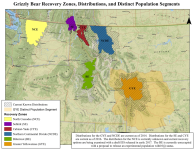
Context:
That's why the Feds want the 10(j) ammendment with new management rules for the NCE.
Last edited:
Sure. You are paraphrasing and making inferences. That's fine. I don't make the same logical leap. I don't know what the person meant, exactly. It could mean what you think, but it might not. I see a lot of additional words you wrote, that are not in the quote.And the same goes for what I wrote
I stopped short of saying populating the entire lower 48. However the 3 fully established of 5 Recovery zones have shown demonstrable outward migration into lands around them, so paraphrasing the bio's words [the people in those communities have to learn to live with an apex predator] that may not have been seen in their midst for generations.
I prefer mooning over licking...Even when they are mooning you?
More context from the Video Transcript:Sure. You are paraphrasing and making inferences. That's fine. I don't make the same logical leap. I don't know what the person meant, exactly. It could mean what you think, but it might not. I see a lot of additional words you wrote, that are not in the quote.
36:57: But the responsibility is on us to get educated on how to coexist and be prepared in case we have an encounter with one of these species. So for hikers, this means....
37:32: or even if you live around the edge of the ecosystem. Maybe it's electric fencing around chicken coops. There's things that we can do.
37:58: And I should also add that millions of people live and recreate safely around grizzly bears and other ecosystem. And we could do the same in the North Cascades. But you can't always prevent human grizzly bear encounters or incidents. And there are really specific steps people can take living and recreating in bear country to reduce the risk. So I would point people to the details on the IGB. See this the interagency grizzly Bear Committee website. This is sort of the the tried and true set of rules that we all try to implement and be safe around bears with.
38:42: Thanks, Jason. Another one here. Semi-related, but I'm wondering if you can speak to the probability of depredation by grizzly bears on livestock. Sure. Another common concern, grizzly bears are omnivores.
Their diets dependent on the ecosystem and availability of foods around the ecosystem. And that changes year to year, season to season in some areas.
Grizzly bear diet consists of 90% plant matter and insect matter. Other other areas, grizzly bear diet consists consist predominantly of meat.
So there's a range. There's a range there. Grizzly bears do occasionally attack livestock and in some cases,
depredations can be chronic. If you get a bear that just figures out how to do it.
Given the small number of grizzly bears in a recovering population, and in this case very few livestock grazing on public lands in the North Cascades,
we would expect a number of grizzly bear depredations to be very low, very low. And as the population grows, those numbers could increase.
And so that's why the TMJ rule [mis-transcribed, means 10(j)] is really important here, because that's this is our opportunity to make sure that communities *have tools they need to coexist peacefully*.
*The 10(j) among other things would include a provision for "taking" of bears due to livestock predation and other management "tools" outside the NCE that is currently not allowed. If a landowner that killed a bear in a location that hadn't seen a Griz in generations threatening their livestock were to be charged and prosecuted in Federal Court for violating ESA I wonder if a "jury of their peers" might see it differently?
Again, there are some things here I really like and support in the 10(j) tools. But since the very large NCE is surrounded by a much greater population than the other states' Recovery ecosystems I still feel that an Alternative A.1:
"16:28: Alternative A does not mean doing nothing. It actually means doing a lot of things. Just we're not speaking about putting bears back in. And so what that means is what we're doing now, existing management practices would be followed, but we wouldn't be bringing bears in. Next slide. So that stuff that we're doing right now, that includes the increased sanitation, poaching control, motorized access management, outreach, education, research, monitoring, you know, everything we can do in terms of protecting this as a grizzly bear ecosystem, managing it as if they were here, hoping that maybe they get here one day."
but also asking Congress to amend ESA to allow for a 10(j) amendment due to an "extraordinary event" of Canadian bear releases north of the NCE expected in 2024 to allow for the same tools with more of a "let's see what happens in Canada first" approach that would support or contradict the NPS & NFWS conclusions that NCE "12:26... could support about 280 grizzly bears" and add local empirical data about the changes to that specific ecosystem (North of and into the NCE) and the surrounding land's fauna and flora from Griz restoration.
Last edited:
Flymph
Steelhead
Sounds like Chinese "TicTok" brain washing to me.Humans are also animals, and top of the food chain now. Some things just can't go back to the way they were. Eliminating 99% of the population and living in teepees and long houses with 0 amenities of modern times just isn't going to happen. Sorry bears, you had your time. Luckily humans are nice enough to provide them with protection and sanctuary in their remaining habitat.


